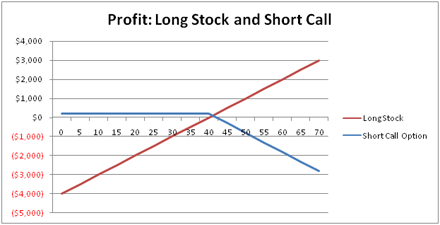Business Finance
Investment Strategies: Covered Calls
Written by Gregory Steffens for Gaebler Ventures
The use of covered calls allows investors to profit from relatively stable stocks. This article introduces the hedging strategy of covered calls, how they are created, and how investors profit from their design.
Many equity investment strategies utilize call options to decrease the amount of risk investors face with their investment portfolios.
One of the most popular hedging strategies is the use of covered calls.
Covered Call
A relatively conservative strategy, a covered call is a position in which one sells a call on an underlying stock that he or she owns.
Although they can be used for a variety of reasons, covered calls are very popular with pension funds, foundations, and other portfolios that need to produce periodic cash payments.
Covered call strategies are commonly referred to as either a "buy-write" or an "overwrite." A buy-write means the investor purchased the underlying stock and wrote, or sold, a call simultaneously.
An overwrite refers to an investor that writes a call option on shares of stock that he or she already owns. The chart below illustrates the separate profit profiles for buying a particular stock and writing a call on the same stock.

By combining the two, one can see the profit profile for a covered call. In exchange for the premium received by selling the option, the investor surrenders the opportunity to benefit from any increase in the stock's price.
However, he or she retains all ownership rights, such as dividends and voting rights, unless the other party exercises the option. In that event, the investor must deliver his or her shares to the other party.
Because of their design, covered call strategies are used when an investor anticipates the stock to remain relatively stable during the life of the call option. Moreover, covered calls decrease the risk involved with stock ownership.
The amount received from writing the call option lessens the investor's exposure to decreases in the stock's value. In the below example, a call option with a $40 strike price is written on a hundred shares of stock. An investor using this strategy realizes negative profits only when the stock price falls below the break-even point of $38.
As long as the value of the underlying stock remains above this point, the investor will benefit from the premium of the call option. For this reason, it is important for investors to pursue a covered call strategy on stocks that will have relatively low volatility during the life of the call option.
Since the payoff profile shows them as having significant downside risk with very little upside reward, covered call strategies may seem fruitless.
However, keep in mind that options are short-term derivative instruments usually written for just months at a time.
While large stock price movements are a reality, smaller movements are far more probable in the short-term. Option writers profit from the small premiums often but rarely lose large amounts off their positions. By making further investments, writers further hedge their positions to minimize any negative movements in the market.

Gregory Steffens is a talented writer with a strong interest in business strategy and strategic management. He is currently completing his MBA degree, with an emphasis in finance, at the University of Missouri.
Share this article
Additional Resources for Entrepreneurs






Conversation Board
We welcome comments, tips, questions or suggestions regarding this article on covered calls.